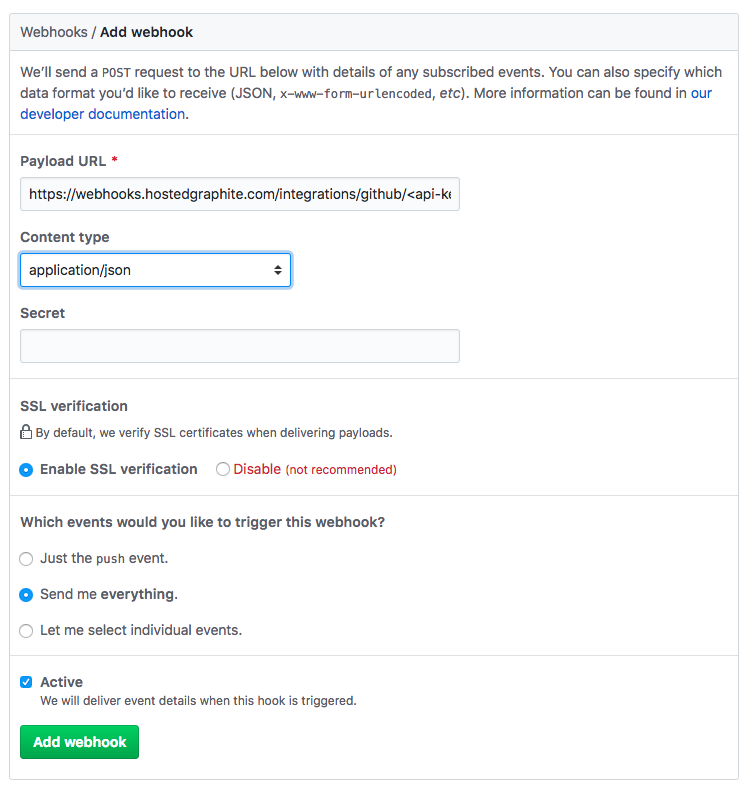 +
+

To integrate GitHub and Pingdom with your monitoring system, please reach out to MetricFire. Book a demo with the MetricFire team to discuss integrating GitHub and Pingdom and how that can support your monitoring system.
MetricFire makes it easy to collect data from your repositories, and visualize GitHub events in the form of dashboard annotations. To enable our webhook integration, copy the webhook from Add-Ons => GitHub in your Hosted Graphite account:
Then add the webhook to your GitHub repo, in the ‘settings’ section => ‘webhooks’

Additionally, there is also a Telegraf Input plugin for GitHub. This plugin will send a variety of metrics to your Hosted Graphite account for increased visibility into your repositories. See our handy blog article with detailed configuration instructions HERE, and the official GH repository HERE.
With a Pingdom webhook add-on, you can pinpoint your events in time to see if they coincide with changes in your metrics. Its easy to configure a Pingdom webhook in your Hosted Graphite account, configure it to Pingdom integrations, and visualize Pingdom events in the form of dashboard annotations. See the Hosted Graphite Pingdom docs for detailed configuration instructions.
You can visualize these events as annotations and query them by tags. More information on configuring annotations can be found in the Hosted Graphite annotations documentation:
MetricFire is a full-scale platform that provides infrastructure, system, and application monitoring using a suite of open-source tools. We will aggregate and store your data as time series metrics, which can be used to build custom dashboards and alerts. MetricFire takes away the burden of self-hosting your own monitoring solution, allowing you more time and freedom to work on your most important tasks.
MetricFire offers a complete ecosystem of end-to-end infrastructure monitoring, comprised of open-source Graphite and Grafana. MetricFire handles the aggregation, storage, and backups of your data, and offers alerting, team features, and API's for easy management of your monitoring environment. You can send server metrics using one of our agents, custom metrics from within your application code, and integration metrics from a variety of popular 3rd party services that we integrate with like Heroku, AWS, Azure, GCP, and many more!
Our Hosted Graphite product has improved upon standard Graphite to add data dimensionality, optimized storage, and offers additional tools and features that provide customers with a robust and well-rounded monitoring solution.
Monitoring ZFS across your business's server infrastructure is crucial for ensuring data integrity, optimizing... Continue Reading